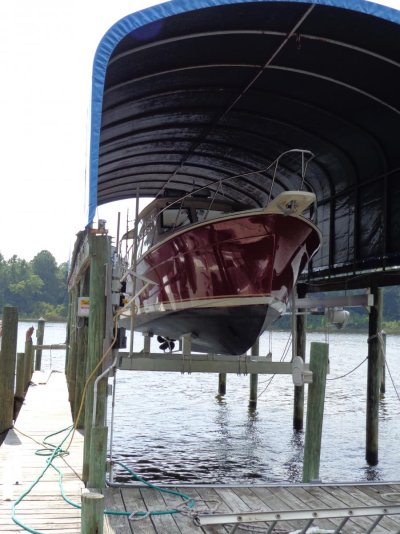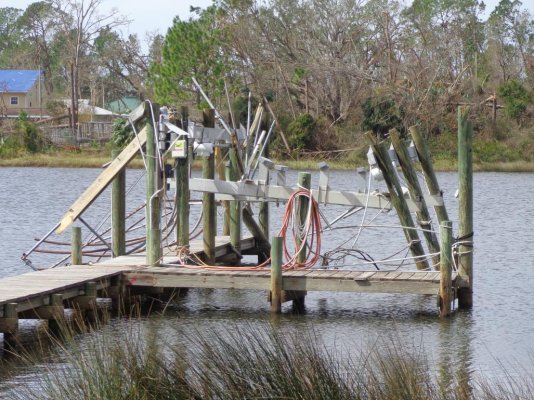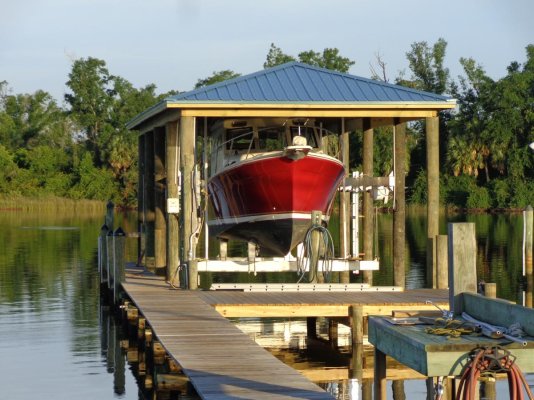I traded out my wooden-hulled 40,000-pound Grand Banks 42 for this roughly 12,000-pound Mainship 30 Pilot II for four reasons. 1) to go a lot faster than the trawler, 2) to get rid of all the paint and varnish maintenance. 3) to avoid bottom fouling expenses and 40 We no longer had a need to a boat of trawler capabilities.
I would have built a lift for the GB if it was not wooden - you just cannot do that in and out of the water business on a wooden hull without creating problems. I have seen trawlers of that size sitting in floating lifts, basically floating dry docks. The downside of that sort of lift is that you still have biofouling and other underwater care of the pontoons, especially in saltwater.
I had a 20,000-pound lift built under the old boat shed (photo 1) for the Mainship for $13,000 in 2015. I specified that the two side beams would have support from three pilings per side instead of the lift company's (Decco of south Florida) design of two. The installed took the measurements, and Decco welded the aluminum to make the beams match my existing pilings.
Four years later Hurricane Michael blew it all down (photo 2). My boat had been removed and hidden in a better hurricane hole than my backyard provided. I would not leave a boat in a lift facing a hurricane.
The beams and cradle of the lift were reused in the 2019 rebuild, but I replaced the four 60-foot stainless cables out of an abundance of caution. Both motors and the limit switch were also replaced.
I cannot give a breakdown of the lift work versus the shed work because it was all wrapped up in insurance and a package deal, but the total was $46,000 (photo 3). This profile roof is VERY slim when viewed from the side and should withstand a very strong storm.



